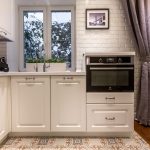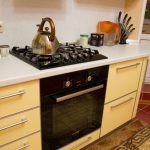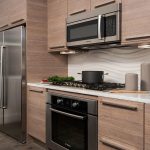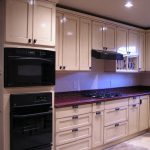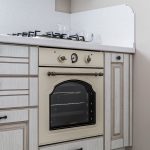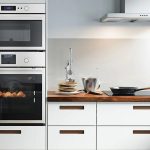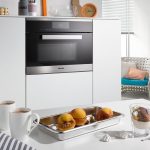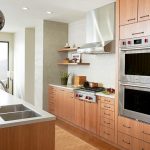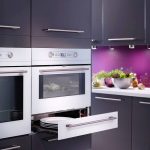Selecting a cabinet for a built-in oven
The kitchen has its own microclimate. This is where food is prepared, processed and stored. Constant moisture, temperature changes and other factors force us to take an individual approach to the selection of furniture. The cabinet for the built-in oven is selected taking into account the specific features and design options.

How to correctly calculate the furniture for the oven
When calculating, you must first take into account the dimensions of the oven itself. This is, in fact, a starting point. Therefore, the selection of furniture should be preceded by the selection of equipment. Standards may vary:
- in width 45-60 cm (in most cases);
- height up to 85 cm;
- depth on average 50-55 cm.
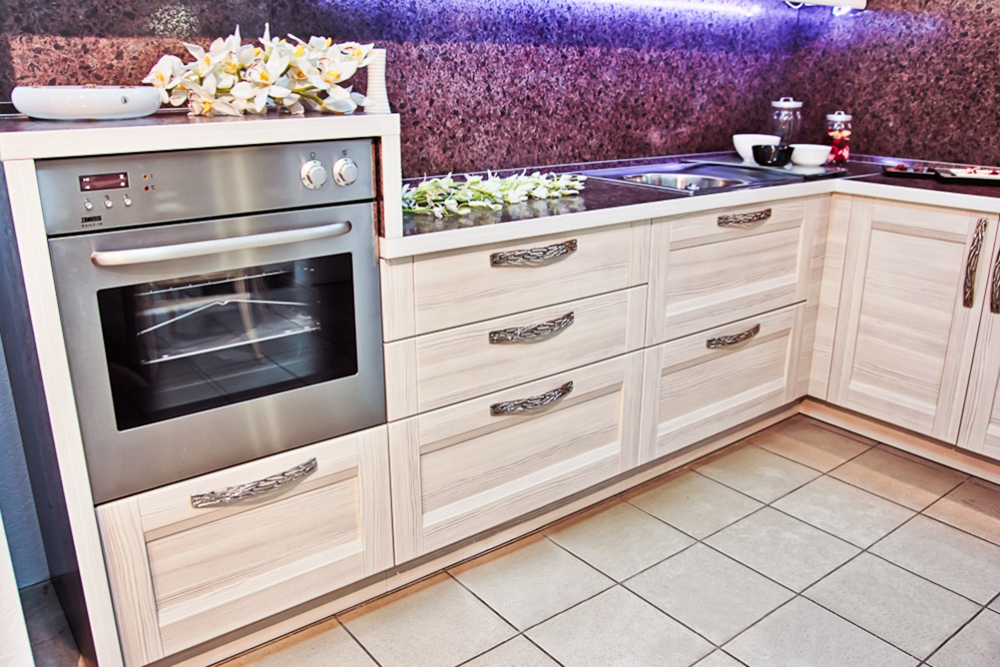
The main thing is to equip a bedside table under the oven. And measurements are carried out on the surface of the oven. Ideally, the bedside table should be able to accommodate the oven. It is desirable that there is a gap of 2-3 cm on the sides and on top of the bedside table.

Note! The oven should not dangle freely inside the cabinet.
How to choose oven furniture
We decided on the order of measurements, it's time to understand what to look for when choosing furniture. Some helpful tips:
- the color of the furniture can be matched to the oven or vice versa to emphasize it in the overall picture of the interior;
- the gap between the oven and the cabinet can be eliminated with a special edging;
- type of surface (it is advisable to choose resistant to dirt and moisture, high temperatures).
Important! In some cases, there is furniture, and the oven is selected after. But this is not the most correct option.
Varieties of cabinets for the built-in oven
There are two main types of cabinets: cabinets and pencil cases. But there are differences in the type of structures, as well as in the material for manufacture. The shape of the products may vary. For example, it is not always relevant to practical application of a standard rectangular shape. Sometimes it is more appropriate to use a triangular or even trapezoidal model.

By design
A floor stand or a pencil case are the main types of construction. As for the nightstand, versatility is appreciated here. The box can be additionally equipped with a pull-out shelf: at the bottom or at the top, it doesn't matter. Suitable for small kitchens.

Floor stands have a number of advantages:
- reduction of the occupied area;
- simplified access to equipment;
- a variety of options for arranging interiors;
- the presence of additional pull-out shelves.
But there are also disadvantages. In particular, it is necessary to bend over when cooking due to the low position of the cabinet. The cleaning process is somewhat complicated.
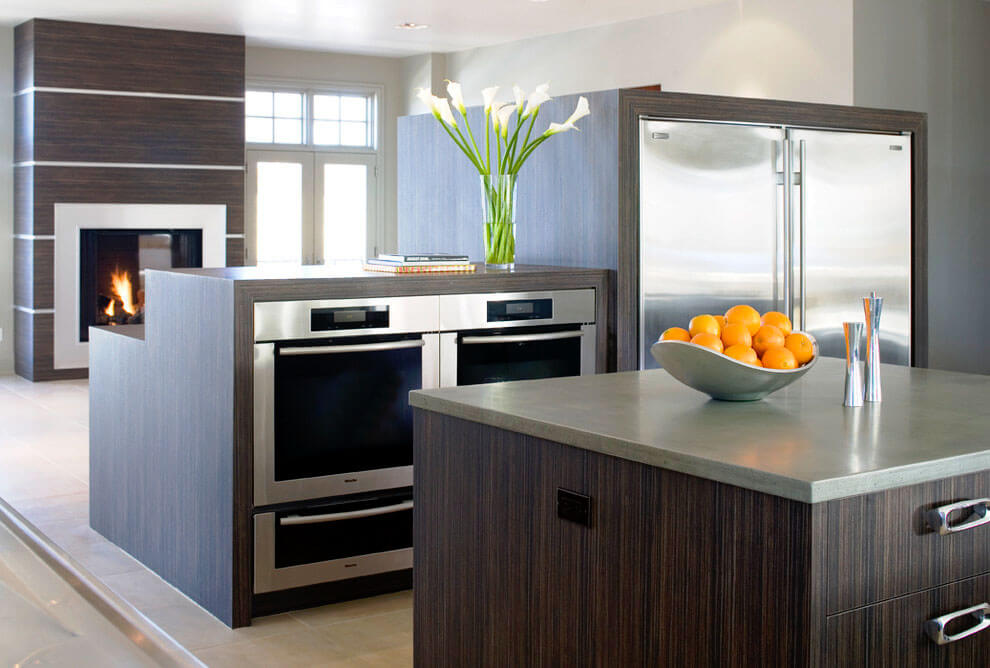
Pencil case. This design option is considered optimal.In this case, the location of the oven can be of two types: on a shelf or in a niche. The height of the location can be chosen independently, this is the main advantage over the floor stand. Particular attention is paid to the strength of the shelf that will support the oven.

By material
Much depends on the quality of the material. Currently, there are three main types that are used in practice.

Let's consider each of them:
- Wood. This means natural material, which is not cheap. In practice, it is not often used, since it requires a special approach to cleaning. In addition, humid and warm environments can change the properties of the material. The fixation must be particularly strong in order to hold the massive structure. The main advantage of wood products is their absolute environmental safety.
- Wood shavings. Pressed sawdust and resins make it possible to achieve high technical characteristics of the product. The cost of products made from shavings is lower than that of analogues made from natural wood. The weight is also less. Surface treatment will not be difficult, as well as its restoration.
- MDF. Has some similarities with the previous material. In this case, paraffin and lignin can act as a binder. Materials are carefully crushed to increase strength. Among the advantages are increased strength indicators, resistance to moisture and temperature influences.
The choice of materials is quite complicated. In addition, the coating for materials can be completely different.

How to install the oven and hob cabinet
The whole process can be done by yourself. This requires a minimum set of tools and the ability to follow instructions. Conventionally, the whole process can be divided into a preparatory stage and a direct installation process. More about each of them.

What needs to be prepared
The preparatory stage begins with determining the location and method of installation. All subsequent actions depend on this. It is necessary to provide some important nuances for electric ovens:
- whether there is protection against power surges;
- grounding;
- ventilation.

Depending on the choice of installation method, you may need: a tape measure, a level, a screwdriver with replaceable nozzles, a hacksaw, crayons / marker. If you plan to make a shelf for the oven yourself, then you will also need material (a fragment of plywood, MDF, etc.).

Installation process
When buying a headset from a furniture store, you can expect to receive assembly instructions. It is important to clearly follow all the recommendations. You must try not to overdo it with screwing, otherwise you can damage the surface of the plywood. Otherwise, use only the recommended tools.

Video: how to install a built-in oven
